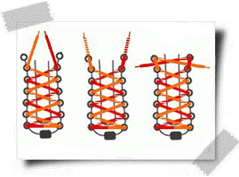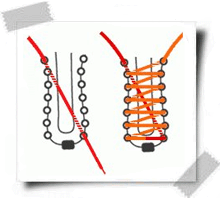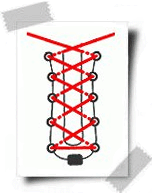
There are all sorts of shoe terms involved in buying a running shoe. A basic understanding of them is always helpful. Here are several of the most important:
Blown rubber : Is a type of outsole common to many running shoes. Blown rubber is a rubber compound which is either expanded or mixed with air during production process, producing a relatively light, cushier outsole—although but it’s less durable than carbon rubber. Many outsoles use a combination of blown rubber in the midfoot and forefoot (for a cushy ride) with carbon rubber in the rearfoot for added durability.
Carbon rubber : Is another common outsole. It is a solid rubber with carbon added to increase the durability of the outsole. A carbon rubber outsole is firmer and heavier than blown rubber but more durable.
Cushioned / Neutral : Type of shoes with maximum midsole cushioning but without any added medial or rearfoot stability devices. Cushioned or neutral shoes (the terms are synonymous) are preferred by runners who don’t have abnormal rearfoot motion (overpronation). Some good examples are: Asics Gel-Cumulus and Nimbus, Mizuno Wave Creation and Rider, New Balance 879, Nike Air Skylon and Adidas Torsion Response.
EVA : Ethylene Vinyl Acetate which is the most common commercially manufactured midsole foam used in running shoes. It is sometimes referred to as CMEVA or compression-molded EVA. Every manufacturer uses EVA in at least some of its running shoes although some proprietary types of EVA are also used under different names such as Nike’s Phylon and Brooks’ Substance 257.
Flex grooves : They are notches (or grooves) sliced into the outsole in the forefoot for better flexibility at toeoff. Almost all high quality running shoes use flex grooves that allow the foot to roll more naturally at toe off.
Heel counter : A plastic cup built within the upper which cups the heel to reduce excessive rearfoot motion. The heel should fit snugly without being too tight. If it’s too wide, the heel will slip in and out of the shoe and cause blisters. Women, in particular, often have narrower heels than men and require a narrow heel counter.
Heel heights : The height at which the foot sits on top of the midsole and outsole. Heel heights vary from shoe to shoe and brand to brand but generally, a bigger, slower runner (especially a heel striker) wants more midsole foam for better cushioning which means a greater (or higher) heel height. Faster, efficient runners tend to strike more in the midfoot or even forefoot and usually prefer a lower heel height. A lower heel height promotes stability, but a higher heel height adds cushioning and takes some of the strain off the Achilles and calf muscles. Training shoes have the highest heel heights; racing shoes the lowest.
Last / Shape of shoe : A term you might hear in the shoe store and it is very confusing because it can refer to two entirely different things. The most important reference is to the shape of the shoe. A last is a shaped piece of wood or metal on which the shoe is actually built. Different shoes use different lasts (especially different brands) which is why shoes fit differently. Basically, there are three shapes: straight, semi-curved and curved. Semi-curved is—by far—the most popular and most runners do well in a semi-curved lasted shoe. A straight-lasted shoe offers the most medial support but there are only a handful of shoes built on a straight last. A curved lasted shoe is rare for a training shoe, but most racing shoes are built on a curved last which is indicative of a highly responsive, fast shoe.
Last : Refer to how a shoe is lasted or how the upper is attached (sewn actually) to the midsole. There are three ways: combination-lasted, slip-lasted or board-lasted. A slip-lasted shoe is entirely stitched; combination lasted shoe is stitched in the forefoot and glued in the rearfoot with a fiberboard and a board-lasted shoe has a fiberboard glued on top of the midsole. Slip-lasting is the most common although some brands—notably Asics—combination last many of its shoes. Some runners believe a combination-lasted shoe is the most stable and most supportive for orthotics but it is really personal preference. (Board-lasted shoes have gone the way of the dinosaur.) To determine which type of lasting the shoe has, remove the insole. If there’s stitching in the rearfoot, it’s slip-lasted. If there’s a fiberboard (a cardboard-like material) on top of the midsole and stitching in the forefoot, it’s combination-lasted.
Lateral : is in reference to the outer edge of a shoe orr the side of the shoe opposite the arch.
Medial side : The opposite of the lateral side. It’s the arch side (or inner) of the shoe. The medial side is the side of the shoe where most of the motion-control or stability devices are located.
Midsole post : Also known as a medial post or two-density midsole. It refers to a firmer density of midsole material on the medial side which reduces overpronation. Almost all brands use a midsole post in at least some of its trainers.
Midsole : The light colored foam your foot rests upon which cushions the foot. The midsole is the most important part of the shoe because of its cushioning responsibilities. Midsoles are usually made of either EVA or polyurethane foam or a combination of the two. Midsoles are also the part of the shoe where the manufacturers use their proprietary cushioning technology such as Asics Gel, Adidas adiPRENE, Brooks HydroFlow, Nike Air, New Balance AbZORB, Mizuno Wave, Saucony GRID or Reebok DMX.
Motion control : A type of shoe which is designed to reduce excessive inward foot motion—overpronation. Motion-control shoes are usually the most expensive, heaviest and protective shoes because they employ the most control and stability features. Overpronators and many big, heavy runners do best in motion-control shoes.
Outsole : The black material on the bottom of the shoe which contacts the ground.
Post : An interchangeable term with a two-density midsole or midsole post.
Polyurethane : The second most common midsole material to EVA. Polyurethane is a heavier, denser material that is more resistant to compression set than EVA and more durable. But it is firmer.
Racing shoes : Are the lightest, most flexible type of running shoe. Some racing shoes are half the weight of typical training shoes, but offer much less in terms of cushioning, protection and durability. Generally, only runners racing at 7-minute pace or faster and who are biomechanically efficient in their gait (i.e., they don’t overpronate) should consider racing shoes.
Stability shoes : Are the most common type of training shoes. Stability shoes usually have a two-density midsole and a stable base of support to reduce overpronation. Some of the most popular (and best) shoes on the market such as the Asics GT-2090, Brooks Adrenaline, New Balance 856, Nike Air Structure Triax, Mizuno Wave Alchemy and Saucony GRID Hurricane.
Two-density midsole : Same as a midsole post or simply, a post. It’s a second, firmer density of midsole material on the medial side which reduces overpronation. The second, firmer density is usually a darker material on the medial side just above the arch area.
[ Read more ................ ]



























































